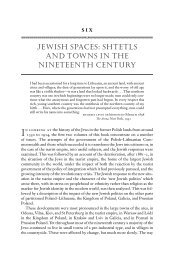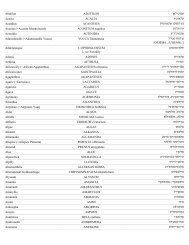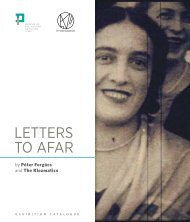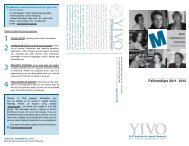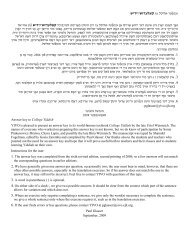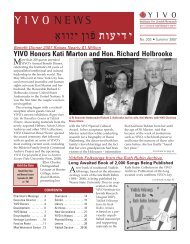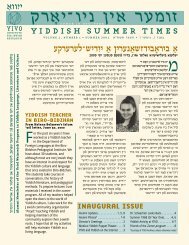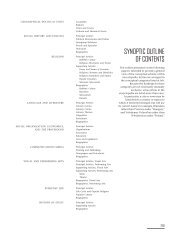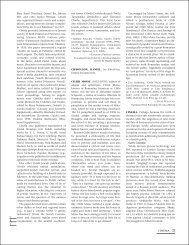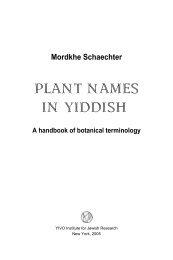geographical–political units - YIVO Institute for Jewish Research
geographical–political units - YIVO Institute for Jewish Research
geographical–political units - YIVO Institute for Jewish Research
Create successful ePaper yourself
Turn your PDF publications into a flip-book with our unique Google optimized e-Paper software.
Yiddish writers in a café or restaurnat, Poland, ca. 1930s. (Left to right) Yoysef Tunkel, Israel Joshua<br />
Singer (in profile), unknown, Borekh-Vladek Tsharni, and others. (<strong>YIVO</strong>)<br />
Di royte velt, which was regarded by its Minsk opponents as the stronghold of so-called<br />
fellow-traveler literature. While sharing in the general enthusiasm <strong>for</strong> the revolution,<br />
the fellow travelers refused to accept the dictates of the proletarian ideologists on issues<br />
of <strong>for</strong>m and style. The themes of revolution, civil war, and socialist construction were<br />
prevalent in Soviet Yiddish literature, with poetry, the short story, and reportage as<br />
prevalent <strong>for</strong>ms.<br />
Along with Dovid Hofshteyn, Leyb Kvitko, Perets Markish, and Shmuel Halkin, who<br />
entered literature as champions of modernist and avant-garde experimentation, there<br />
emerged a new phenomenon of politically engaged poetry that was accessible to mass<br />
readership. This trend was represented by Itsik Fefer, Izi Kharik, and their followers,<br />
who often combined ideological commitment to communism with sentimental nostalgia<br />
<strong>for</strong> the shtetl, giving preference to simple imagery and romantic poetic <strong>for</strong>ms such as<br />
the narrative poem and the ballad dealing with the heroism of the revolution and civil<br />
war, as well as the mass enthusiasm of socialist construction. The concerns of women<br />
were usually more domestic. Rive Balyasnaya, Rokhl Brokhes, Rokhl Boymvol, Shifra<br />
Holodenko, and Khane Levin captured in their lyrical poetry rare intimate moments of<br />
everyday life of the young generation of <strong>Jewish</strong> builders of communism.<br />
The revival of prose in the Soviet Union began during the second half of the decade:<br />
among its examples were the short novel Khadoshim un teg (Months and Days; 1926) by<br />
Itsik Kipnis, a seemingly naive story of a pogrom in the author’s native shtetl that in a<br />
subversive way questions some of the certainties of the Soviet internationalist ideology;<br />
and the novel Der mentsh mit der biks (The Man with the Rifle; 1928) and short stories<br />
13



